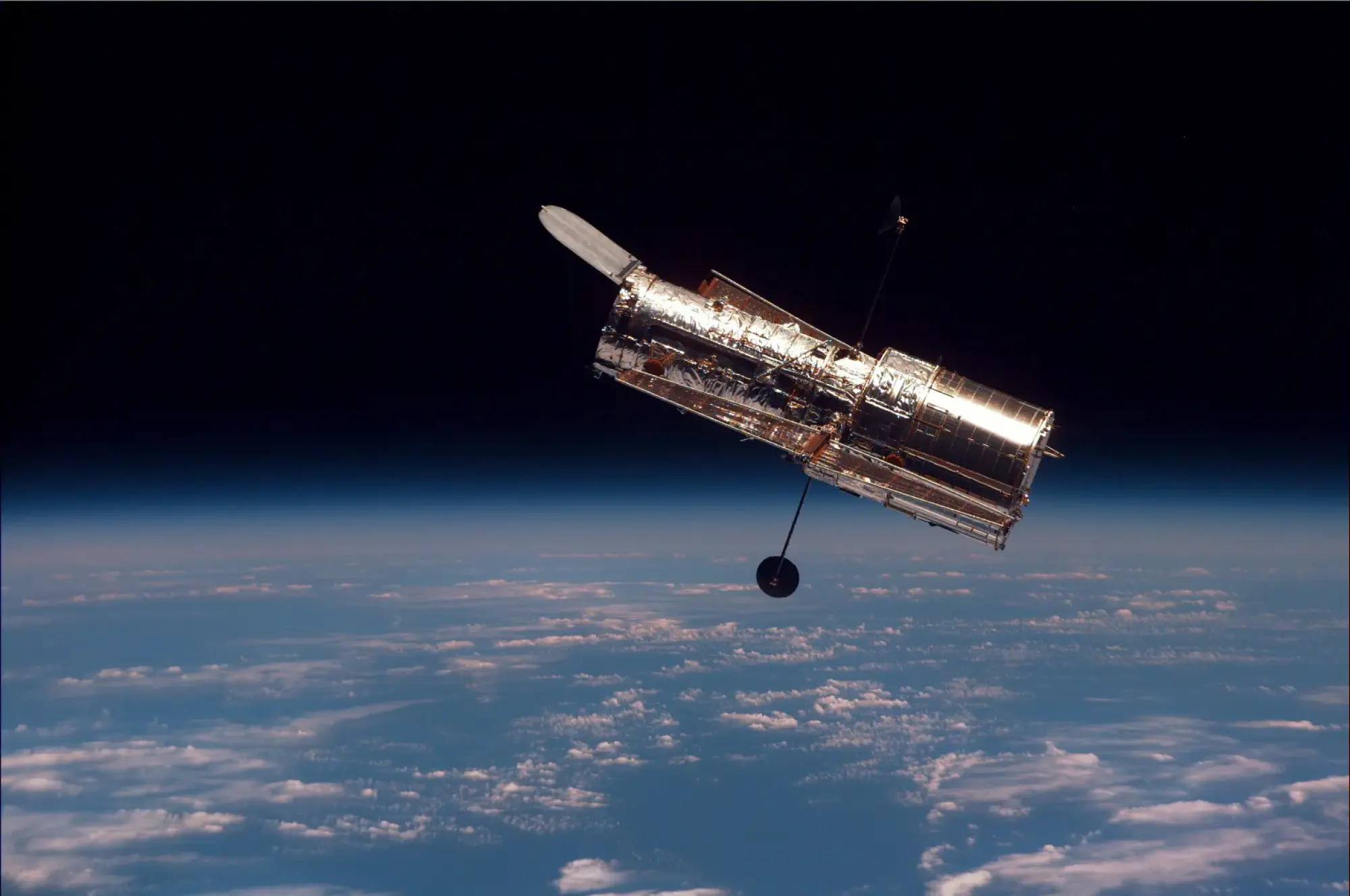
The Hubble Area Telescope captured some bizarre, unidentified stuff in probably the most detailed photographs ever taken of the fast space surrounding a quasar.
Quasars, a shortening of the time period „quasi-stellar objects,“ are blindingly vivid galaxy cores within the early universe. Although these extraordinarily distant objects appear like stars within the sky, they’re the ensuing mild from feasting supermassive black holes.
The telescope, a partnership between NASA and the European Area Company, zoomed in on quasar 3C 273, about 2.5 billion light-years from Earth. What it noticed within the quasar’s midst was astounding and can immediate extra analysis within the years to return.
„My colleagues are excited as a result of they’ve by no means seen this a lot element earlier than,“ stated Bin Ren, an astronomer on the Université Côte d’Azur in France, in a statement.
The Hubble Area Telescope took closeup pictures of quasar 3C 273.
Credit score: NASA / ESA / Bin Ren / Joseph DePasquale
Although „blobs“ might not sound very scientific, that’s precisely how Ren and the analysis crew described what they noticed in their paper, printed within the journal Astronomy & Astrophysics earlier this 12 months. Together with quite a lot of blobs, they noticed a mysterious L-shaped factor. The Space Telescope Science Institute in Baltimore, which runs Hubble and the James Webb Space Telescope, introduced the findings this week.
So what may these items be?
Scientists have instructed not less than a number of the objects could possibly be small orbiting galaxies on the precipice of falling into the central black gap, which is what’s powering the quasar. The entire objects have been discovered inside 16,000 light-years of the black gap.
Mashable Mild Pace
However that is simply an informed guess. Astronomers could possibly higher establish these bizarre issues with follow-up observations by the Webb telescope, the main area observatory that senses mild at infrared wavelengths.

Astronomers used a coronograph, an instrument on the Hubble Area Telescope, to blot out the blindingly vivid mild of the quasar so they might examine its environment.
Credit score: NASA / ESA
Black holes are a number of the most inscrutable phenomena in area. They do not have surfaces, like a planet or star. As an alternative, they’ve a boundary referred to as an „event horizon,“ or some extent of no return. If something swoops too shut, it will eventually fall in, by no means to flee the outlet’s gravitational clutch.
How supermassive black holes type is much more elusive. Astrophysicists imagine these invisible giants lurk on the heart of nearly all galaxies. Current Hubble observations have bolstered the theory that they start within the dusty cores of starburst galaxies, the place new stars are quickly assembled, however scientists are nonetheless teasing that out.
Quasar 3C 273, which was the primary of its type found, is as luminous as 4 trillion suns or 100 occasions brighter than the complete Milky Way.
„For Hubble, staring into the quasar 3C 273 is like trying instantly right into a blinding automobile headlight and attempting to see an ant crawling on the rim round it,“ in accordance with the Area Telescope Science Institute.
When astronomer Maarten Schmidt discovered it in 1963, it regarded like a star nevertheless it was a lot too distant for a single star to have been the supply. Scientists have since discovered that quasars are relics of a a lot earlier time within the universe.
The closest quasars to Earth are nonetheless a number of hundred million light-years away, which means they’re noticed now as they have been lots of of tens of millions of years in the past. That quasars aren’t discovered nearer to house is a clue they existed when the universe was much younger.
Since Schmidt’s discovery, many different quasars have been discovered. Scientists proceed to review them as a result of they supply perception into the evolution of the universe.

A jet rising from the quasar’s supermassive black gap appears to be dashing up the farther it travels from the supply.
Credit score: NASA / ESA / J. Olmsted illustration
As a way to see the proverbial ant on a headlight, the analysis crew used a Hubble instrument that blots out a lightweight supply, very like how a solar eclipse blocks the face of the sun with the moon, to disclose the quasar’s surrounding surroundings. The so-called coronagraph allowed the scientists to look eight occasions nearer across the black gap than ever earlier than.
Along with seeing mysterious blobs, the researchers received a greater take a look at the 300,000 light-year-long jet of fabric rising from the quasar. Their findings revealed one thing maybe counterintuitive: The farther the jet received from the black gap, the quicker it went.
Trending Merchandise











